 This month DonorDreams is hosting the nationally acclaimed Nonprofit Blog Carnival, and this month’s theme is: “If you could go back in time and give your younger-fundraising-self one piece of advice, what would it be?” In addition to asking other non-profit bloggers to submit posts for consideration, I am also focusing this month’s DonorDreams blog posts on the topic. The April 2016 Nonprofit Blog Carnival is scheduled to go live on Thursday, April 28, 2016. So, mark your calendars because this month promises to be full of fun submissions.
This month DonorDreams is hosting the nationally acclaimed Nonprofit Blog Carnival, and this month’s theme is: “If you could go back in time and give your younger-fundraising-self one piece of advice, what would it be?” In addition to asking other non-profit bloggers to submit posts for consideration, I am also focusing this month’s DonorDreams blog posts on the topic. The April 2016 Nonprofit Blog Carnival is scheduled to go live on Thursday, April 28, 2016. So, mark your calendars because this month promises to be full of fun submissions.
Today’s time machine post involves a younger me who learned valuable lessons about inspiring and managing special event volunteers. Enjoy!
 As many readers know, I was once an executive director for a non-profit organization that ran a Duck Race fundraiser. For those of you who don’t know what a Duck Race is, it is simply a raffle where serial numbers on the bottom of little rubber ducks correspond to numbered adoption papers sold to donors. The first 10 ducks that cross a water raceway finish line win prizes. The challenge from a revenue perspective is essentially two-fold:
As many readers know, I was once an executive director for a non-profit organization that ran a Duck Race fundraiser. For those of you who don’t know what a Duck Race is, it is simply a raffle where serial numbers on the bottom of little rubber ducks correspond to numbered adoption papers sold to donors. The first 10 ducks that cross a water raceway finish line win prizes. The challenge from a revenue perspective is essentially two-fold:
- Sell lots of sponsorships
- Sell lots of duck adoptions
The key to selling lots of duck adoptions is also simple. Organize as many volunteer teams as possible. Encourage them to sell to their friends, family and co-workers AND set up adoption tables in high foot traffic areas (e.g. outside of grocery stories, in malls, etc).
The big challenge from a non-profit fundraising professional’s perspective is:
- inspiring volunteers to sell duck adoptions
- creating a culture of fun
- being creative with accountability
- instilling a sense of urgency
- keeping people focused on the goal
Being a young fundraising professional, I made the decision to use weekly update reports in an effort to inspire competition between duck adoption teams as well as foster a sense of accountability and urgency.
Of course, as we got closer and closer to the event and the duck adoption totals weren’t exponentially jumping, my weekly reports ended up doing the opposite as they were intended. Not only were volunteers uninspired, but some board members started whispering about whether or not I knew what I was doing.
<Sigh>
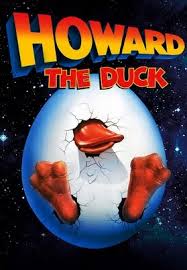 In the 1986 box office flop Howard the Duck, Howard gets transported from his home world of “Duckworld” by a dimensional-jumping device. If I had access to that device today, I would totally transport myself to a place where I could share the following nuggets of advice with my younger-fundraising-self:
In the 1986 box office flop Howard the Duck, Howard gets transported from his home world of “Duckworld” by a dimensional-jumping device. If I had access to that device today, I would totally transport myself to a place where I could share the following nuggets of advice with my younger-fundraising-self:
- reporting can cut both ways with volunteers (esp. when falling short with goals)
- always find good news to spotlight regardless of how small it may be
- perceived negativity is like a flu virus (very catchy and spreads quickly)
- “who” issues the report is important (peer-to-peer accountability is powerful and reports should come from the volunteer event chair and not staff)
- positive incentives and fun recognition items are important to tie to a reporting tool
I would also put my arm around my younger-fundraising-self and tell me that using “reporting tools” to create accountability and “goal setting” to create urgency are best practices, but these tools must be used in conjunction with the following volunteer engagement strategies:
- well run, in-person meetings
- mission-focused messaging and activities
- training
- setting expectations upfront
- helping people feel organized and being personally organized
- celebrate success (both big and small successes early and often)
<Sigh>
Where is a dimensional-jumping device when you need one? 😉
If you are a non-profit blogger who wants to participate in this month’s Nonprofit Blog Carnival and submit a post for consideration on this month’s carnival theme, click here to read the “call for submissions” post I published a few weeks ago. It should answer all of your questions and clearly explain how to submit your entry. If not, then simply email me and I’ll be happy to help.
Here’s to your health!
Erik Anderson
Founder & President, The Healthy Non-Profit LLC
www.thehealthynonprofit.com
erik@thehealthynonprofit.com
http://twitter.com/#!/eanderson847
http://www.facebook.com/eanderson847
http://www.linkedin.com/in/erikanderson847

 As a teenager, I was a
As a teenager, I was a 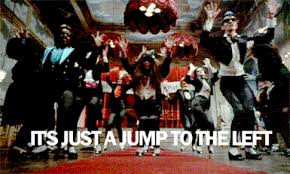 Instead of picking up the phone and talking to mail professionals, that 31-year-old executive director decided to engage a few friends and do a 12,000 piece mailer by himself. Uh-huh. I thought it would be easy to:
Instead of picking up the phone and talking to mail professionals, that 31-year-old executive director decided to engage a few friends and do a 12,000 piece mailer by himself. Uh-huh. I thought it would be easy to: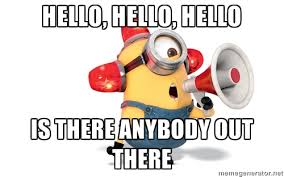 As a young Boy Scout professional in the 1990s, I was just starting to learn may way around fundraising principles and best practices. While I previously had helped out with a few special events and written a grant proposal for another organization, I never helped plan-organize-implement an annual campaign pledge drive, which is what I was being asked to do with a group of Friends of Scouting (FOS) volunteer within my district.
As a young Boy Scout professional in the 1990s, I was just starting to learn may way around fundraising principles and best practices. While I previously had helped out with a few special events and written a grant proposal for another organization, I never helped plan-organize-implement an annual campaign pledge drive, which is what I was being asked to do with a group of Friends of Scouting (FOS) volunteer within my district. Fast forward a number of years into the future when I was a first-time executive director for a Boys & Girls Club.
Fast forward a number of years into the future when I was a first-time executive director for a Boys & Girls Club. Sometimes when I daydream, I see myself standing outside my house in the street with Dr. Emmitt Brown (aka Christopher Lloyd’s character in Back to the Future), waiting for the lighting storm so I can jump into that
Sometimes when I daydream, I see myself standing outside my house in the street with Dr. Emmitt Brown (aka Christopher Lloyd’s character in Back to the Future), waiting for the lighting storm so I can jump into that  Ahhhh, yes. I remember this embarrassing lesson very well. It occurred in the late 1990s when I was a young Boy Scout professional who was responsible for membership management, district-wide programming, local unit support and fundraising for a small suburban district in the Northwest Chicago suburbs. It was the 20th Century and the idea of email was new and evolving as a way to communicate with non-profit volunteers.
Ahhhh, yes. I remember this embarrassing lesson very well. It occurred in the late 1990s when I was a young Boy Scout professional who was responsible for membership management, district-wide programming, local unit support and fundraising for a small suburban district in the Northwest Chicago suburbs. It was the 20th Century and the idea of email was new and evolving as a way to communicate with non-profit volunteers.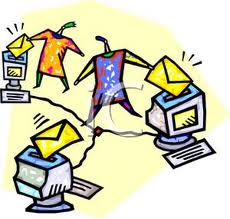 To better understand what I just said, I will use a simple analogy . . .
To better understand what I just said, I will use a simple analogy . . . Sometimes, when I’m daydreaming, I imagine myself in a time machine going back to 1999 to have a serious conversation about email usage with my younger-fundraising-self. I also sometimes wonder if it would be helpful to take a page out of the Arnold Shwarzenegger Terminator movies by traveling back in time to sabotage the work of the person who created email. 😉
Sometimes, when I’m daydreaming, I imagine myself in a time machine going back to 1999 to have a serious conversation about email usage with my younger-fundraising-self. I also sometimes wonder if it would be helpful to take a page out of the Arnold Shwarzenegger Terminator movies by traveling back in time to sabotage the work of the person who created email. 😉 Is your nonprofit organization trying to break into the millennial space in order acquire and retain more millennial donors?
Is your nonprofit organization trying to break into the millennial space in order acquire and retain more millennial donors? Zach Hagopian is the co-founder and COO of
Zach Hagopian is the co-founder and COO of 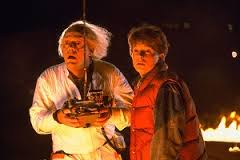 A few months ago I was onsite with a client and found myself working with a young fundraising professional. They hadn’t been on the job for long. In fact, their background wasn’t even in resource development. If my memory serves me well, then I think they had a college degree and an internship’s worth of experience in marketing or public relations.
A few months ago I was onsite with a client and found myself working with a young fundraising professional. They hadn’t been on the job for long. In fact, their background wasn’t even in resource development. If my memory serves me well, then I think they had a college degree and an internship’s worth of experience in marketing or public relations.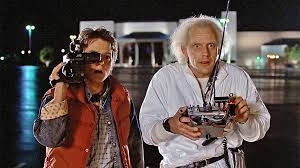 Later that evening, I was working from the hotel room with the television chirping away in the background. One of the “Back to the Future” movies was the evening feature. Ignoring Michael J. Fox and focusing instead on my work from earlier in the day, I started thinking about all of the fundraising mistakes I had made (and hopefully learned from) when I was younger.
Later that evening, I was working from the hotel room with the television chirping away in the background. One of the “Back to the Future” movies was the evening feature. Ignoring Michael J. Fox and focusing instead on my work from earlier in the day, I started thinking about all of the fundraising mistakes I had made (and hopefully learned from) when I was younger. Let’s have a little fun with this topic. It lends itself nicely to it. Right? 😉
Let’s have a little fun with this topic. It lends itself nicely to it. Right? 😉 You are welcome to write your blog post anytime during the month of May (or even submit a post you may have previously published); however, I must receive your submission by the end of the day on Monday, April 25, 2016:
You are welcome to write your blog post anytime during the month of May (or even submit a post you may have previously published); however, I must receive your submission by the end of the day on Monday, April 25, 2016: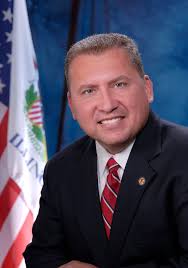
 Earlier this week and last week, I started writing about the State of Illinois’ budget crisis and how it is impacting non-profit organizations. In
Earlier this week and last week, I started writing about the State of Illinois’ budget crisis and how it is impacting non-profit organizations. In  Don’t want to take my word for it because you might have heard it from your grandfather or another beloved family member. No problem … I completely understand. Let me provide you with scientific proof. Simply
Don’t want to take my word for it because you might have heard it from your grandfather or another beloved family member. No problem … I completely understand. Let me provide you with scientific proof. Simply  Your board is likely made up of smart people. If they aren’t being used (at a minimum) as a “sounding board” on the issue of government funding and what to do about it, then my suggestions are:
Your board is likely made up of smart people. If they aren’t being used (at a minimum) as a “sounding board” on the issue of government funding and what to do about it, then my suggestions are: Of course, the more difficult question for most non-profit organizations is “What to do about it?”
Of course, the more difficult question for most non-profit organizations is “What to do about it?”
 Here is what I didn’t expect to hear:
Here is what I didn’t expect to hear: Believe it or not, this phenomenon has a name. It is called the
Believe it or not, this phenomenon has a name. It is called the